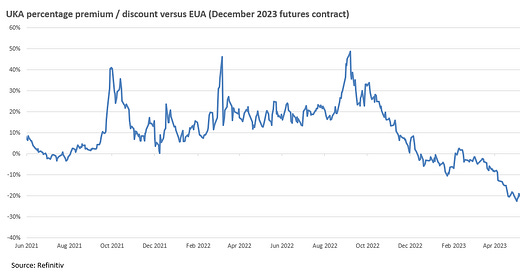The UK government did everything right to establish net zero credibility.
The UK was the first major economy in the world to pass laws to end its contribution to global warming by 2050. The UK Climate Change Act (CCA) of 2008 stipulates ‘legally binding’ interim and long-term (2050) targets for emission reductions. Meanwhile, the Committee on Climate Change (CCC), the independent monitoring entity, has the authority to advise and monitor the governments performance on a regular basis. The government have a legal obligation to regularly obtain and respond to the CCC’s advice.
There are three distinct types of commitment device used in carbon markets: legislation, delegation and securitisation. Enshrining net zero into law and delegating responsibility (albeit some, but not all) ticks off two of the boxes required. The third commitment device, securitisation, was met when the UK ETS launched in May 2021 (see Commitment issues).
That credibility was at least partly reflected in the strength of the UK’s emissions trading scheme and the price of it’s carbon allowances (UKA’s). Over the first 18 months or so of the UK ETS, the UKA price traded at an average premium of ~10-15% to the EUA price.
However, as Benjamin Franklin said, “It takes many good deeds to build a good reputation, and only one bad one to lose it.”
From a peak of around €120 per tonne in late August 2022 (a premium of almost 50% over EUA’s), the price of UKA’s had slumped to €60 per tonne by late June 2023 (a discount of ~33% to EUA’s). Unfortunately, a sequence of poor judgements and weak guidance towards future policy support left the market bereft of credibility.




